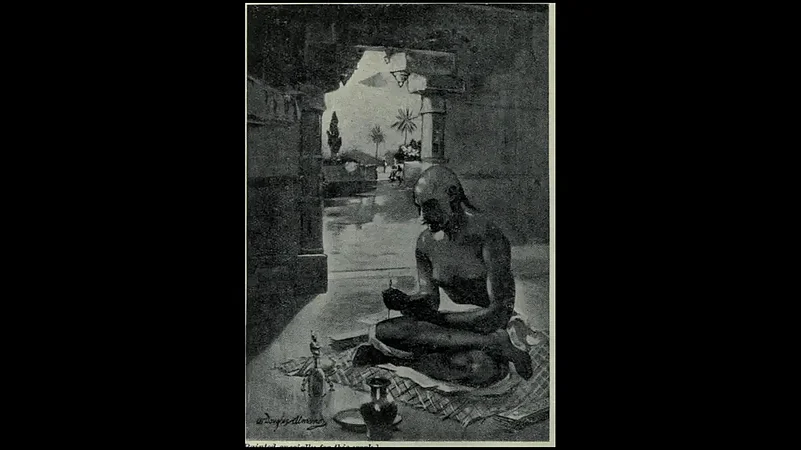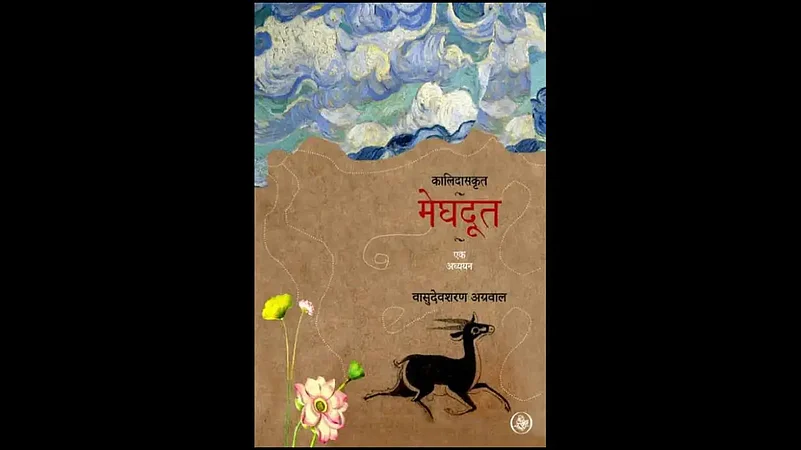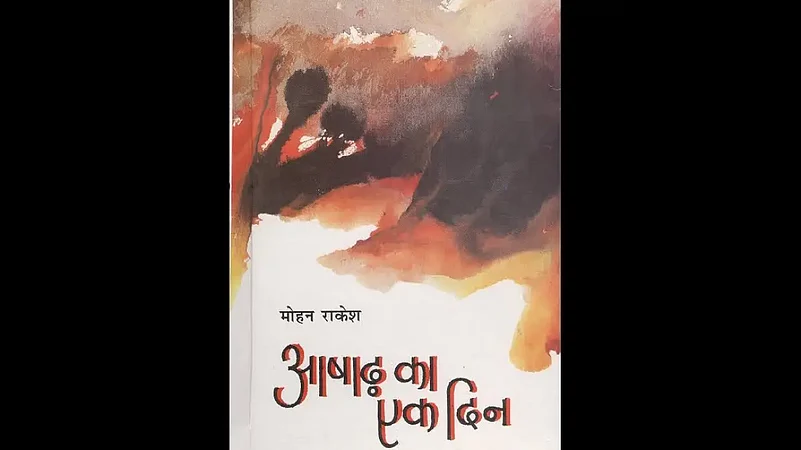In The Purananuru, among the earliest literary texts of Classical Tamil and one of the eight Sangam anthologies, there’s an extraordinary poem that compares the ghee dripping from “fried meat” with “drops of rain shower down on a lake of water”. The next sentence goes a step further and tells us that “cow’s milk” is poured into white cups full of meat to ensure greater epicurean joy.
Pause at these stunning verses. Some 2000 years ago a poet drew an image of meat, cow milk and raindrops. It was not an exotic expression but found a place both in our sacred as well as ancient heritage. To understand what it tells about our divinity consider this mention of rain in an episode of Tulsidas’s Ramcharitmanas. Ravan has abducted Sita. Aggrieved, the two brothers wander in the jungle. Since his beloved has gone missing, the elder brother spends his day teaching the younger one values of devotion, renunciation and ethics. As the sky turns dark one day, Ram’s voice suddenly changes. The most stoic of men, he looks up with longing and says, “Look Lakshman, the peacocks dance to the sight of clouds.” Under the spell of the falling drops, Maryada Purushottam, the supremely contained being, utters the words that reveal what he has always carefully concealed. “Ghan ghamand nabh garjat ghora, priya hin darpat man mora (As clouds shatter the sky, bereft of my beloved, my heart trembles with fear),” Ram tells his brother.

These verses were composed at a time when the gods were not divorced from literature, and the depiction of the divine in multiple forms was considered neither blasphemous nor against a “secular” aesthetic. The rains touched and moved all, transforming even Ram into a tragic and lonely lover.
Kalidas epitomized such a lover in his Meghdootam (The Cloud Messenger), among the greatest love poems ever. Few know that he composed this poem in the Ramgiri hills of north Chhattisgarh, which was to witness the Naxal insurgency many centuries later. Yaksha, the protagonist of Meghdootam, is, in fact, an impersonation of Kalidas. In the poem, Yaksha works at the court of Kuber, the ruler of the mythical Alka kingdom located in the Himalayas. After Kuber sends Yaksha to exile for dereliction of duties, he wanders in the countryside far away from his beloved. Incidentally, Kalidas, who worked in Chandragupta Vikramaditya’s kingdom Ujjain, was also forced to leave the city for some reasons. Living in exile, the poet created the exiled hero Yaksha, who asks Megha (cloud) to carry his message to his beloved. Among the numerous poems on rains and clouds, as well as on the theme of love-messenger, Kalidas’s Megha remains perhaps the most famous and recurring image.

One can record it with some sadness that few in Ramgarh, a town adjoining the Ramgiri hills, now realize that a classic of world literature was composed in their neighbourhood. A love verse in the Brahmi script is also inscribed on a cave of the hills, besides several other frescos, indicating that before Kalidas many others had been frequenting these caves for their artistic creation.
**
Rains are perhaps the most accessible and used motif in literature. Since rains offer a stunning range of states like light drizzle to massive floods, from lush greenery to excruciating humidity, it came to symbolize emotions ranging from joy, melancholy and longing to redemption and resurrection.
The metaphor of rains and Kalidas takes an altogether different form in modern literature, gathers existential questions and guilt, most notably in Mohan Rakesh’s play Ashad Ka Ek Din (One Day in the Season of Rain). Rakesh’s Kalidas is a village poet, in love with a village girl Mallika. Having written extraordinary love poems, the pastoral poet Kalidas gets an offer to join the king’s assembly and become a court poet. Unable to resist the material temptations, Kalidas leaves his village and his lover only to launch his fall as a human. While rains in the Meghdootam were a harbinger of hope, in Rakesh’s play they appear at a decisive moment, often laden with sorrow and dejection. The glorious beloved of Meghdootam becomes a lost woman in Rakesh’s play. As the poet gets trapped in his own desires, Rakesh asks an incisive question through the motif of rains: Is artistic talent always in conflict with a desire for fame?
Mohan Rakesh gave a new interpretation to Kalidas and his exile, as it became among the most widely staged Hindi plays over the last six decades.

The Hindi poet Nagarjuna also contested Meghdoot's metaphor in his wonderful poem Badal Ko Ghirte Dekha Hai (I’ve seen the clouds gathering up)’. Terming Kuber and Yaksha and others as ‘imagined’ characters, he recorded his vivid experience of clouds shattering on the Kailash Parvata.
**
There is another rain, less written about, but more lonely and hypnotic. Raindrops that arrive with snow, when the skies decide to shower their love in two distinct forms. While most of us have experienced winter rains that bring a moist chill to the town, only those who have lived in higher altitudes know the joy of snow and rain simultaneously caressing their face. A rare moment of twinning bliss, leaving you unable to choose between the two.
The Chinese poet Yiyan Han writes in ‘Snow In The Rain Poem’ about a moment when the flying snow is “disturbing the rain’s footsteps”, with a competition between them about who will be first “embraced by the earth”.
You often want to believe that those who love rain and leave everything behind to get themselves drenched at the first drizzle are homeless people, people in search of a shelter, who find the sky their only hope. It is for those people perhaps William Faulkner wrote: “How often have I lain beneath rain on a strange roof, thinking of home”?
Now, think of those who wait for both the forms of precipitation—snow and rain. It’s what mountains do to you. They intensify the sense of homelessness. The mightier the mountains, the humbler and solitary you begin to feel, before one evening snow rains arrive to make you the chosen resident of the cosmos.
















